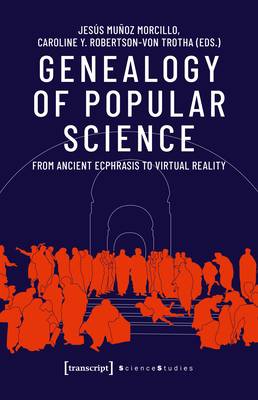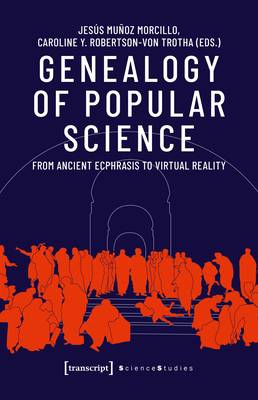
- Afhalen na 1 uur in een winkel met voorraad
- Gratis thuislevering in België vanaf € 30
- Ruim aanbod met 7 miljoen producten
- Afhalen na 1 uur in een winkel met voorraad
- Gratis thuislevering in België vanaf € 30
- Ruim aanbod met 7 miljoen producten
Zoeken
Genealogy of Popular Science
From Ancient Ecphrasis to Virtual Reality
Jesus Munoz Morcillo, Caroline Y. Rob Trotha
€ 48,45
+ 96 punten
Omschrijving
Despite the efforts of modern scholars to explain the origins of science communication as a social, rhetorical, and aesthetic phenomenon, most researchers approach the popularization of science from the perspective of present issues, thus ignoring its historical roots in classical culture along with its continuities, disruptions, and transformations. This volume fills this research gap with a genealogically reflected introduction into the popularization of science as a recurrent cultural technique. The category "popular science" is elucidated in interdisciplinary and diachronic dialogue, discussing case studies from all historical periods. Classicists, archaeologists, medievalists, art historians, sociologists, and historians of science provide the first diachronic and multilayered approach to the rhetoric techniques, aesthetics, and societal conditions that have shaped the dissemination and reception of scientific knowledge.
Specificaties
Betrokkenen
- Auteur(s):
- Uitgeverij:
Inhoud
- Aantal bladzijden:
- 370
- Taal:
- Engels
- Reeks:
- Reeksnummer:
- nr. 1
Eigenschappen
- Productcode (EAN):
- 9783837648355
- Verschijningsdatum:
- 30/01/2021
- Uitvoering:
- Paperback
- Formaat:
- Trade paperback (VS)
- Afmetingen:
- 170 mm x 244 mm
- Gewicht:
- 920 g

Alleen bij Standaard Boekhandel
+ 96 punten op je klantenkaart van Standaard Boekhandel
Beoordelingen
We publiceren alleen reviews die voldoen aan de voorwaarden voor reviews. Bekijk onze voorwaarden voor reviews.











